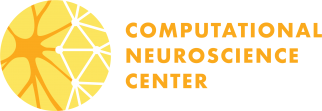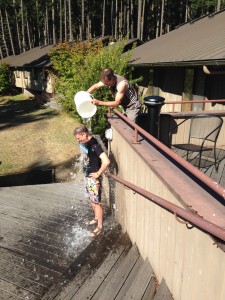We are well into the second week of our new summer Workshop on the Dynamic Brain, co-hosted by the UW Computational Neuroscience program and the Allen Institute for Brain Science. The course is held at Friday Harbor Labs, UW’s exquisitely beautiful “science camp” on the forested shores of San Juan Island. This course has a very distinct flavor compared with other computational neuroscience courses: it is structured around the data being produced by the Allen Institute. Twenty-four students from all over the world have gathered for the opportunity to learn to use relevant tools, access new data and to start to think about constructing models for cortical function based strongly on measured anatomy and ultimately, physiology and activity data from behaving animals– all with help and advice from the people creating and curating that data for public use. Christof Koch, Clay Reid, Shawn Olsen and Michael Buice discussed visual processing, connectomics and high-level models of cortical function while Lydia Ng, Nick Cain and David Feng introduced students to tools to explore the “projectome” using AIBS unpublished data and to click together network models using a new graphical user interface called SimViz. Along with the Allen Institute team, speakers have included local UW faculty including Adrienne Fairhall and Eric Shea-Brown on models of neural coding, visual scientists Wyeth Bair, Anitha Pasupathy and Jay Neitz and data sciences guru Bill Howe; Google engineer Blaise Aguera y Arcas speaking on machine intelligence; and Anne Churchland, from Cold Spring Harbor Laboratory, on circuits of decision-making.
Students are busy carrying out cool projects including analyses of the topography and multisensory nature of projections into superior colliculus, building dynamical models based on the projectome connectivity matrix and developing recurrent networks for feature extraction.
As today’s highlight, Christof Koch accepted the ALS ice bucket challenge.




